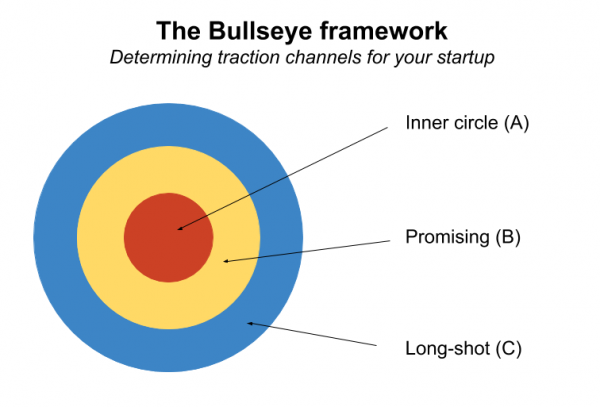3 minutes read
If You Build it, They won’t Come“If you build it, they will come” is no longer true. The golden days are over and we validated it once more (thrice actually!) when we launched ReadBoard, BA Apps and CricHeroes last year.
But then how do we get initial traction for our products? Is there a way to systematically approach this problem?
According to Gabriel Weinberg – co-founder of DuckDuckGo and author of Traction, “Founders should spend 50 percent of their time on product and 50 percent on traction.”
Traction is a must read book for everyone building a product, tech or non-tech. Gabriel has defined “Bullseye Framework” to systematically get more traction for your product.

We did “Traction Sprint” for all three products to get users from the beginning.
So what is a “Traction Sprint”?
Well, it is a combination of ideas from the Traction Book and SCRUM. It is a process to execute the BullsEye Framework.
But first, let’s understand various steps of the BullsEye Framework.
- Decide Traction Goal:
What is the traction you are looking for? For CricHeroes , it can be 100,000 players in next 3 months. For Propeller, it can be 10,000 downloads in next 2 months. For BA Apps, it can 5 Analytics App in next 5 months. Each product has its own traction goal. - Brainstorm:
Believe it or not, there are total 19 channels you can use to get traction for your product. In other words, what all things are possible. They make the Outer Ring in above Bullseye Framework. Brainstorm around every channel without any bias to understand how many quality users (or downloads) you can bring in by spending how much money and in how much time. - Rank:
After brainstorming, you should be able to identify 5 to 6 most promising channels. These channels are – What’s Probable. They make the Middle Ring.
- Test:
For each traction channel in the middle ring, construct cheap traction test(s). Run those tests for a month to validate if the chosen channel is promising or not.
- Focus on What Works:
Based on results of cheap tests, decide the core channel. You should focus on this core channel only to get initial traction for your product. You may chose 2-3 other channels as supporting channels but core channel can only be one. That’s the Bulls Eye!
Sounds good so far? Alright then this is how the Traction Sprints works.
Week 1
- Founders decide the Traction Goal for their products.
- Digicorp identifies Traction Team. (Generally consisting of product manager, designer, developer, advisor and marketing person.)
- Founder explains the traction goal to the team.
- Team brainstorms around 19 possible channels and gathers possible strategies in each of these channel.
- Team identifies 5-6 probable channels and strategies around the same.
- Team defines Cheap Tests for each of these channels.
- Team defines Critical Path. (Steps to perform cheap tests. Milestones to measure channel effectiveness.)
Week 2 – 3 – 4 – 5 (Founder and marketing team does following steps.)
- Execute Cheap Tests
- Measure Test Results
By end of Week 5, you should have results to identify your core channel.
Week 6 onwards
- Define strategies for core channel and for other supporting channels if you have any.
- How to execute strategies for at least next 6 months.
- Review strategy and results every two weeks.
You should redefine strategy at regular intervals, quarterly, every six months etc. In other words, when your core channel is exploited completely and when you no longer gets the traction, you need, you should do the traction sprint again and define a new core channel.
We have applied Traction Sprint to all our products and have found it to be very very effective. Consider it as a part of your product development strategy from day one.
Remember, 50% time on product and 50% time on traction.
Kuntal
- Posted on March 30, 2017


